NASA probe to deliver package to Utah desert after 7-year wait

DUGWAY, Utah (KTVX) – A 30-minute drive into the remote Dugway Proving Grounds is a patch of desert that is expecting a unique package drop. A package that has taken 7 years to deliver.
This package, rather than coming from FedEx or UPS, is coming from a near-Earth asteroid named Bennu and is being delivered by the spacecraft OSIRIS-Rex.
The package is a large space capsule that holds a sample container filled with regolith (loose rocks and soil) from the asteroid’s surface.
The spacecraft OSIRIS-REx—Origins, Spectral Interpretation, Resource Identification, and Security-Regolith Explorer—was launched on September 8, 2016, and headed out into the asteroid belt seeking to meet up with and explore Bennu.
The trip to Bennu took a year and a half, and once there, the spacecraft studied the asteroid and took photos. It then landed on the asteroid for approximately 5 seconds before pushing off and snapping a few more photos. Afterward, the spacecraft returned to Earth.
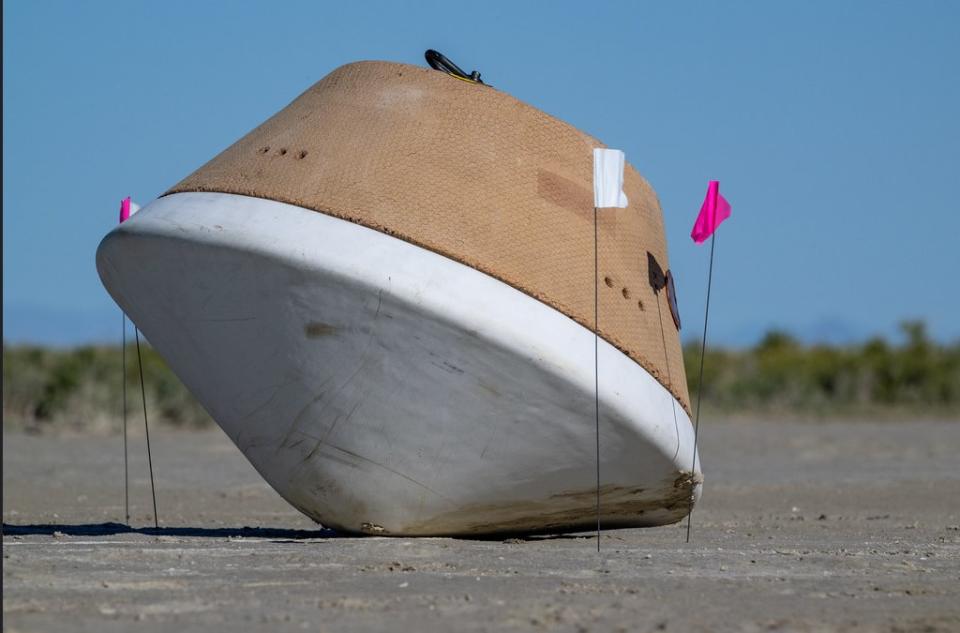
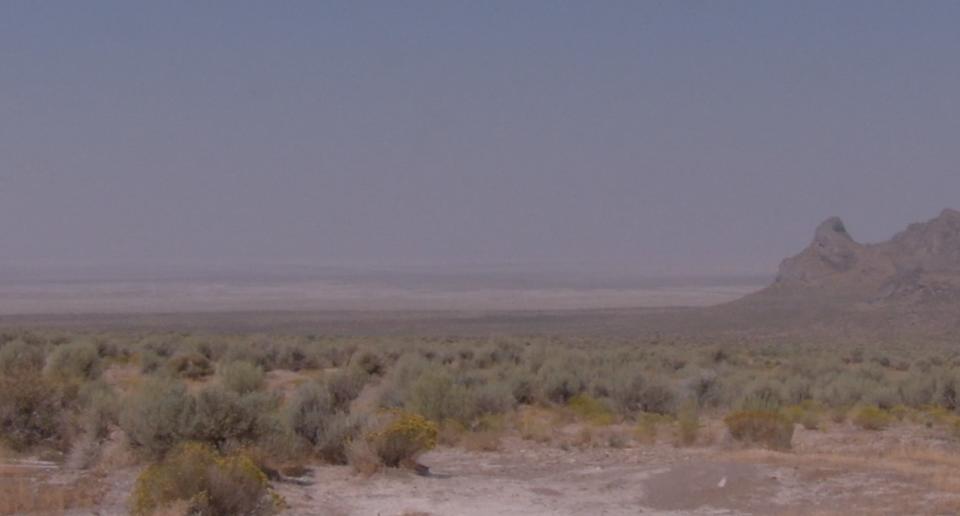
On September 24 at approximately 4:45 a.m. the OSIRIS-REx will release the capsule containing the sample a mere 63,000 miles from Earth. Around 8:40 a.m. the capsule will enter the Earth’s atmosphere and scream toward the planet at 27,650 mph, before deploying parachutes meant to slow it down. It will touch down somewhere in the landing area at the Utah Test and Training Range at Dugway at speeds of about 11 mph.
Crews from NASA preparing for the landing had their final test on August 28. Scientists and Media toured the overlook of the landing site—a 37-mile by 9-mile ellipse (250 square miles)—and got a peak at the “clean room” that will house the sample while it is being prepped for the journey to Houston’s Johnson Space Center.

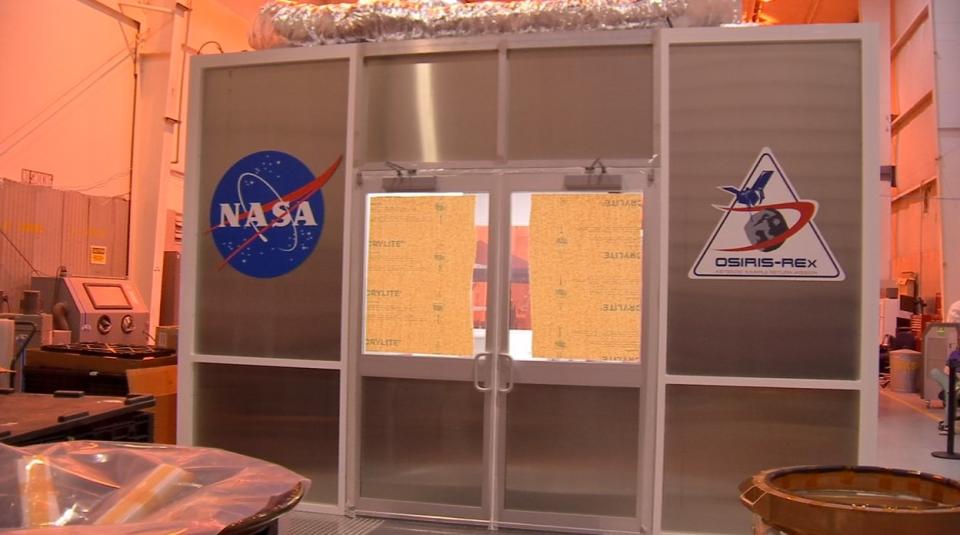
The sample asteroid was chosen for several factors, the primary being its near proximity to Earth and its richness in carbon, meaning it could contain the chemical building blocks of life.
“We are literally looking at geological materials that formed before the earth even existed,” Dante Lauretta, OSIRIS-REx principal investigator relates.
The sample traveling to the desert of Utah is the largest Asteroid sample to ever reach Earth and the first such sample for NASA. The United States has brought back moon samples, comet samples, and ionic samples but this is the first asteroid sample. The scientists involved could not be more excited.
“I personally wanted to be out there to greet these pieces of Bennu to our home planet,” said Lauretta. “To welcome them to the curation facility at Johnson Space Center and get them ready for the adventure we are about to put them on.”
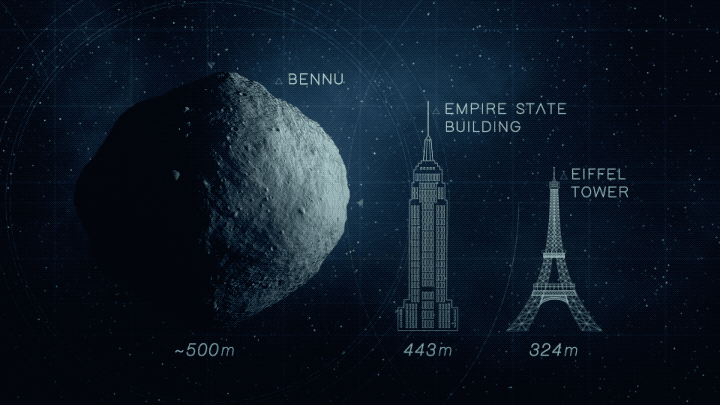
Lauretta was instrumental in the creation of the mission back in 2008 and has dedicated the last 15 years to the success of OSIRIS-REx. His enthusiasm was contagious during the press conference last week.
“We are going back to the dawn of the solar system. We are looking for clues as to why Earth is a habitable world. This rare jewel in outer space that has oceans, it has a protective atmosphere, and we think all of those materials were brought by these carbon-rich asteroids very early in our planetary system formation,” Lauretta said.
He continued to say they hope the sample provides more clues to the following questions: “What is life? How did it originate? and why was the Earth the place that it occurred?”
Lauretta further explained the composition of Bennu was a perfect combination to answer multiple scientific questions.
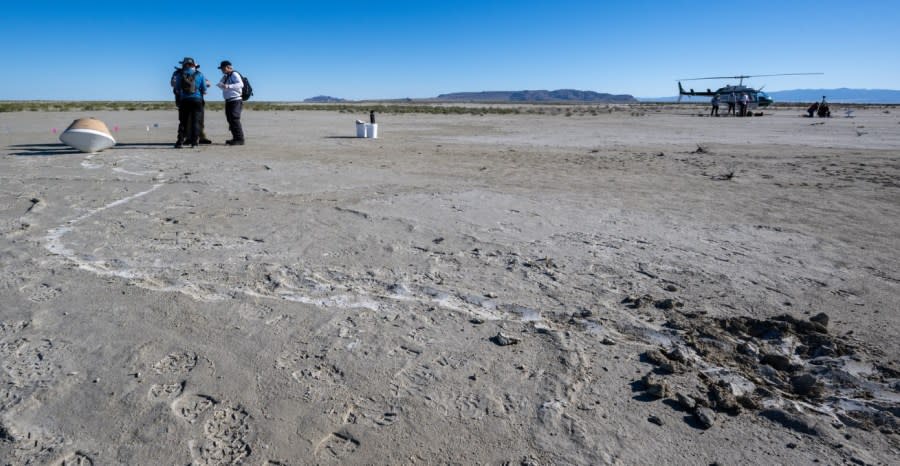
“Because Bennu is so rich in carbonaceous compounds, we believe that we are bringing back [the] kind of material [that] literally may be representative of the seeds of life that these asteroids delivered at the beginning of our planet, that led to this amazing biosphere, biological evolution and to us being here today to look back on that amazing history,” Lauretta said.
The sample will be eventually curated, examined, and studied by scientific teams all over the world. The largest portion will remain with NASA scientists and a portion will be stored in a secure facility.
Portions of the asteroid sample will be given to Canada and Japan and the remainder of the sample will be publicly available for analysis by request by scientists around the world.
For the latest news, weather, sports, and streaming video, head to WesternSlopeNow.com.

